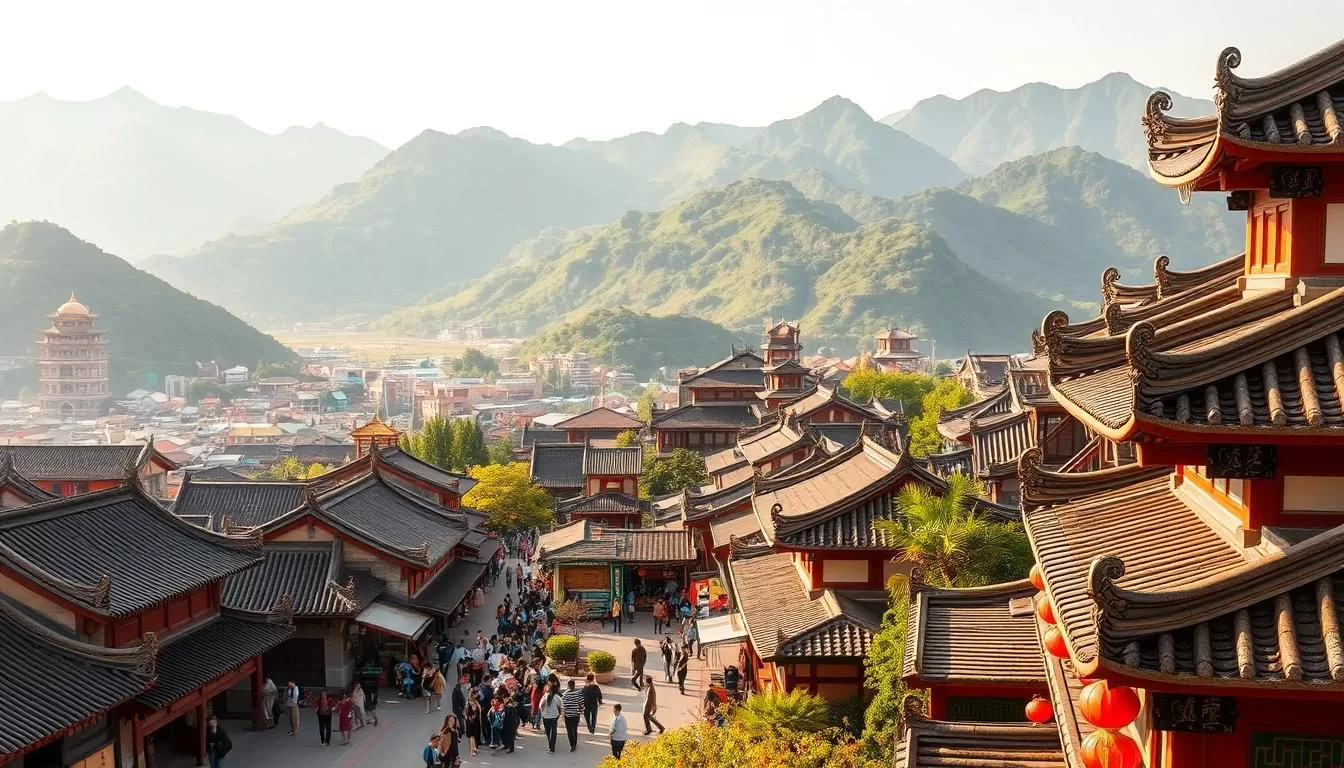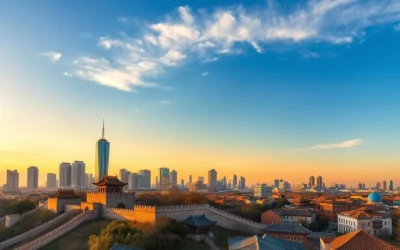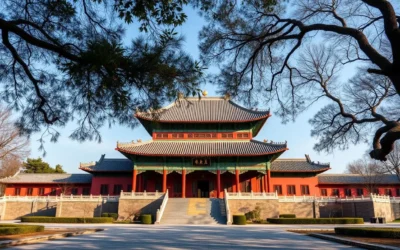✓ Accommodations✓ Flights✓ Rental Cars
Welcome to a region where history, geography, and culture intertwine to create a vibrant tapestry. Located at 24.417°N, 118.317°E, this area is home to a rich linguistic heritage that reflects its diverse population. With a population of over 41 million, it ranks 15th in the country, showcasing its significance.
This coastal region is not just about numbers. It’s a place where every valley once had its own dialect, adding to the unique charm of the area. The Han group makes up 98% of the population, but the She and Hui communities also contribute to its cultural richness.
From the bustling cities to the serene mountains, this region offers a glimpse into a world where tradition meets modernity. Whether you’re exploring its history or planning your next travel adventure, there’s always something new to discover. Let’s dive into the layers of this fascinating area together!
Introduction to Fujian Province
Step into a world where mountains meet the sea, creating a landscape of endless beauty. This region is a perfect blend of natural wonders and cultural richness, inviting you to explore its unique charm.
Setting the Scene for Your Journey
Imagine standing on a coastal plain, with towering mountains behind you and the vast sea ahead. This is Fujian, a place where geography shapes life. The Wuyi Mountains rise to 6,000 feet, offering breathtaking views and a cool retreat from the warm coastal areas.
The Min River flows through the heart of the region, covering 50% of its drainage area. This river has been a lifeline for centuries, supporting agriculture and trade.

Understanding Fujian’s Strategic Location
Located along the southeastern coast, Fujian has always been a gateway for cultural exchange. Its 1,680-mile coastline has made it a hub for maritime trade since the Song dynasty.
This strategic position has influenced its dialects, like Minnan and Mindong, which evolved due to the rugged terrain and isolation of mountain communities.
Today, Fujian continues to thrive as a cultural and historical hub. Its population of over 41 million reflects its significance in the region.
Whether you’re drawn to its scenic beauty or its rich history, Fujian offers a journey like no other. Pack your bags and get ready to explore this vibrant area!
Geographic and Demographic Insights
Discover a region where geography shapes life and culture in unique ways. From towering mountains to winding rivers, this area offers a diverse landscape that influences its people and traditions.
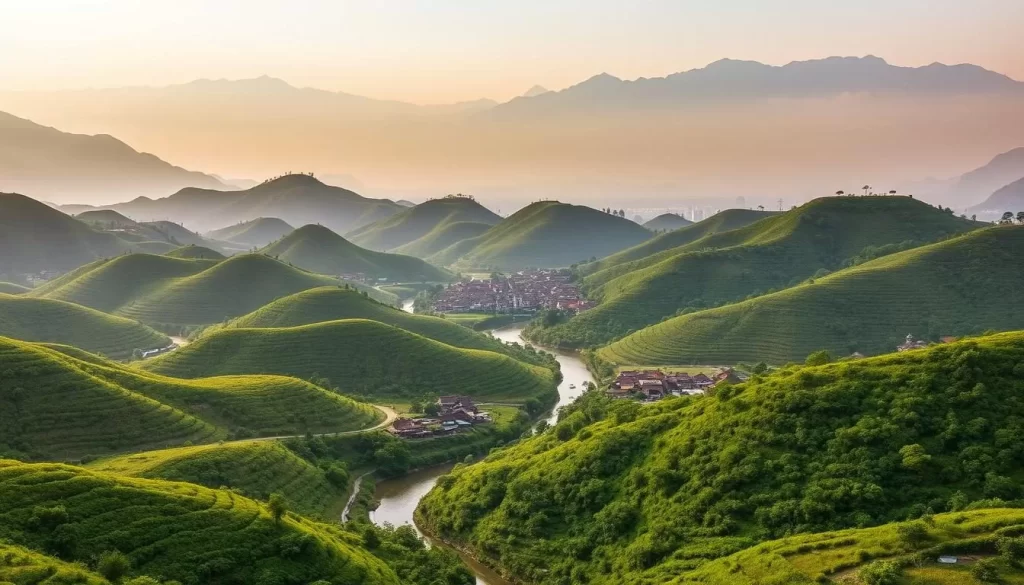
Mountains, Rivers, and Coastal Plains
The rugged terrain is dominated by majestic mountains, some rising over 6,000 feet. These natural barriers have created isolated valleys, each with its own dialect and customs.
The Min River flows through the heart of the region, covering 50% of its drainage area. This vital waterway supports agriculture and has been a lifeline for centuries.
Coastal plains stretch along the sea, creating natural harbors that have served as crucial trade routes. These plains have shaped the region’s economy and cultural exchange over time.
Population, Area, and Trade Influences
With a population of over 41 million, this region ranks 15th in the country. Its 122,000 km² area includes bustling cities and serene rural areas.
Trade has always been a cornerstone of life here. The strategic location along the coast has made it a hub for maritime commerce since ancient times.
Geographical barriers have also led to the development of unique dialects, each confined to specific valleys. This linguistic diversity adds to the region’s rich cultural tapestry.
From its mountains to its coasts, this area’s geography continues to shape its history, economy, and way of life. Understanding these influences helps you appreciate its unique character.
Historical Background and Migration Impact
Uncover the stories of migration and trade that define this area. Over centuries, waves of settlers and dynastic shifts have shaped its cultural and linguistic landscape. Let’s explore how these events continue to resonate today.
Early Immigration Waves and Dynastic Changes
Early settlers, including families like Lin, Huang, and Chen, arrived during the Tang dynasty. These groups brought their traditions, contributing to the region’s rich history and dialect diversity.
During the Min Kingdom, exiled populations further enriched the area. Their influence can still be seen in local customs and language varieties.
The Role of Trade and Maritime Routes
Trade has always been a cornerstone of this region’s development. Its strategic location along the coast made it a hub for maritime commerce.
By the 1990s, foreign investment surged, reaching 28.5 billion yuan. This economic growth transformed the area into a modern trade center.
| Event | Impact |
|---|---|
| Tang Dynasty Migration | Introduced new families and traditions |
| Min Kingdom | Enriched cultural and linguistic diversity |
| Maritime Trade Expansion | Boosted economic growth and cultural exchange |
From early settlers to bustling trade routes, this region’s history is a testament to resilience and adaptability. Its legacy continues to shape its vibrant culture today.
Fujian Province, China: Official and widely spoken languages
Explore a land where linguistic diversity paints a vivid cultural picture. This area is home to a rich tapestry of languages and dialects, each contributing to its unique identity. From the classrooms to the streets, you’ll find a blend of Standard Mandarin and local dialects that reflect its history and geography.
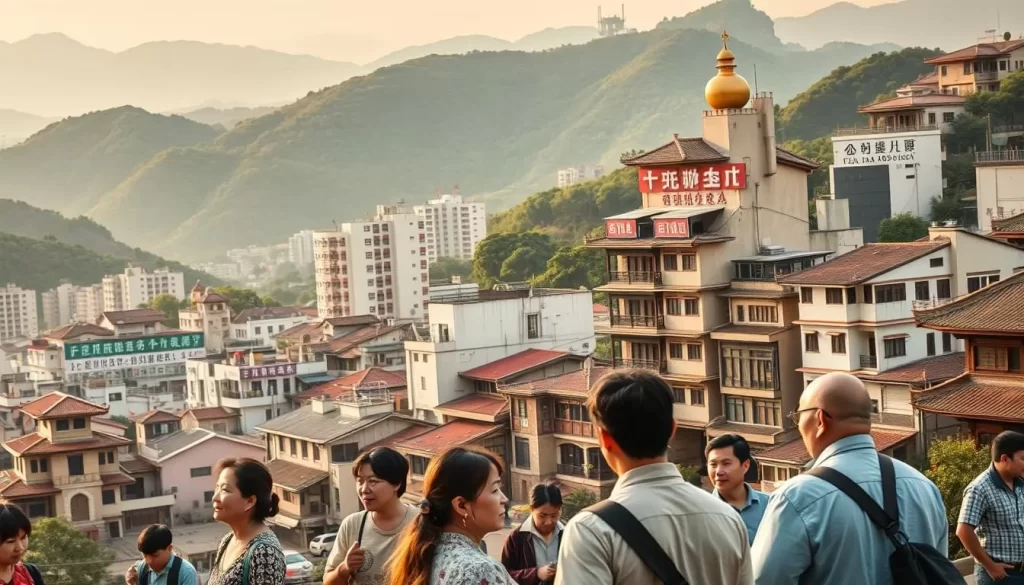
Standard Mandarin’s Role in Education and Governance
Standard Mandarin serves as the primary medium of instruction in schools and the official language for government communication. Its widespread use ensures that people from different parts of the area can connect seamlessly.
This language bridges the gap between tradition and modernity, making it a cornerstone of daily life. Whether you’re in a bustling city or a quiet village, you’ll hear it spoken with pride.
Local Dialects: Minnan, Mindong, and More
Beyond Mandarin, the area boasts a variety of local dialects. Minnan, spoken in cities like Xiamen and Quanzhou, is one of the most prominent. Mindong, prevalent in Fuzhou, adds another layer to this linguistic mosaic.
Geographical isolation has historically led to the development of distinct dialects. For example, accents can change every 10 li (about 3 miles), showcasing the region’s diversity.
The Influence of Hakka and Other Language Groups
In western parts of the area, the Hakka group has left a lasting cultural imprint. Their unique language and traditions enrich the local heritage, offering a glimpse into centuries-old migration patterns.
Other varieties, like Minbei and Minzhong, further highlight the region’s linguistic richness. Each type of speech tells a story of its own, reflecting the area’s complex history.
| Dialect | Primary Areas |
|---|---|
| Minnan | Xiamen, Quanzhou |
| Mindong | Fuzhou |
| Hakka | Western Fujian |
From Standard Mandarin to local dialects, this area’s linguistic landscape is as diverse as its geography. Each language and dialect adds a unique feature to its cultural identity, making it a fascinating place to explore.
Cultural and Linguistic Diversity in Everyday Life
Immerse yourself in a vibrant cultural tapestry where music, food, and art tell stories of tradition. This area is a treasure trove of experiences, blending ancient practices with modern life. From the melodies of traditional tunes to the flavors of local dishes, every moment here is a celebration of heritage.
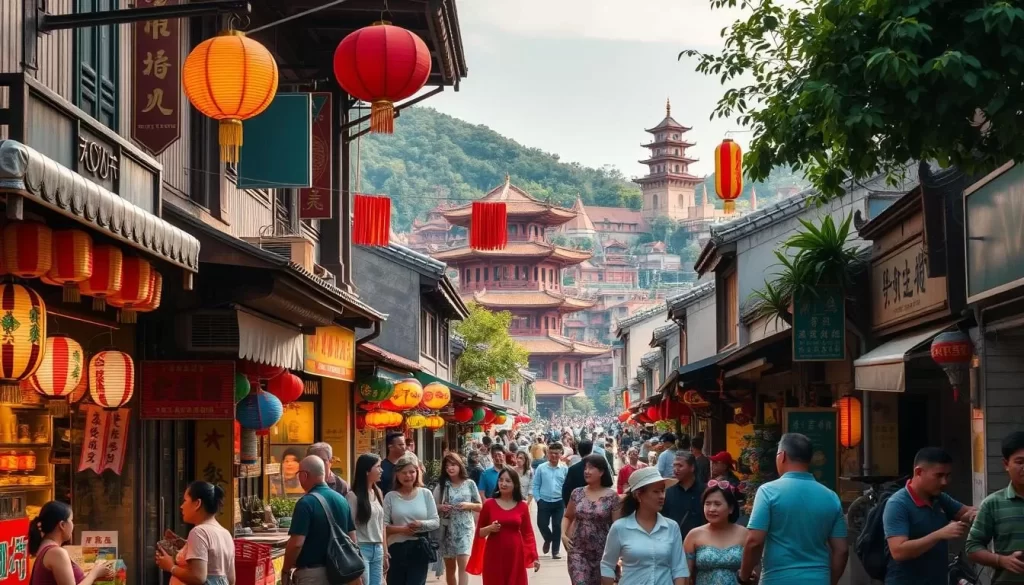
Traditional Music, Opera, and Folklore
Music is the heartbeat of this region. Nanyin, a traditional style, dates back to the Sui and Tang dynasties. Its soothing melodies are often performed with instruments like the pipa and dongxiao.
Opera is another highlight. Puppet shows and local opera forms captivate audiences with their vibrant costumes and storytelling. These performances are not just entertainment—they’re a window into the history and values of the area.
Local Cuisine and Artisan Crafts
Food here is an art form. Dishes like Fotiaoqiang, also known as Buddha Jumping Over the Wall, showcase the sophistication of local flavors. Seafood specialties are a must-try, reflecting the coastal influences.
Artisan crafts add another layer to the cultural experience. Shoushan stone carvings and lacquer ware are renowned for their intricate designs. These pieces are not just beautiful—they’re a testament to the skill and creativity of local artisans.
From the sounds of traditional music to the tastes of exquisite cuisine, this area offers a journey through time and culture. Whether you’re exploring its art or savoring its flavors, every experience here is a celebration of its rich heritage. For more insights into the linguistic diversity of this region, check out this detailed guide.
Government, Education, and Language Policies
Language and education policies have played a pivotal role in shaping the cultural identity of this area. Over time, shifts in administration and reforms have influenced how people communicate and learn. Let’s explore how these changes have impacted everyday life.
Historical Shifts in Provincial Administration
In the past, administrative power transitioned from a centralized provincial system to county-level governance. This shift allowed local communities to have more control over their language and educational practices.
Historically, the area’s rugged terrain led to isolated communities, each developing its own dialect. As governance evolved, policies were introduced to bridge these linguistic gaps while preserving local identities.
One notable change was the relocation of the provincial government in recent decades. This move aimed to modernize administration and better address the needs of diverse communities.
Modern Language Education in Fujian
Today, Standard Mandarin is the primary medium of instruction in schools. It ensures that students from different parts of the area can communicate effectively.
However, modern policies also recognize the importance of preserving local dialects. Schools now incorporate regional languages into their curricula, fostering a balance between national integration and cultural heritage.
Reforms have also focused on improving access to education in rural areas. These efforts aim to reduce disparities and ensure that every child has the opportunity to learn both Mandarin and their native dialect.
“Language is the road map of a culture. It tells you where its people come from and where they are going.”
Understanding the interplay between government policies and cultural identity helps you appreciate the area’s rich linguistic tapestry. For more insights into the languages spoken in China, explore this detailed guide.
| Policy | Impact |
|---|---|
| Standard Mandarin in Schools | Enhanced national communication |
| Dialect Preservation | Strengthened cultural identity |
| Rural Education Reforms | Reduced educational disparities |
The Impact of Geography and Trade on Language Variation
The rugged terrain and bustling trade routes have shaped the way people communicate in this area. Mountains and rivers acted as both connectors and dividers, creating distinct dialects in isolated valleys. This unique geography has left a lasting mark on the language landscape.
Natural Barriers and the Evolution of Dialects
Natural barriers like the Wuyi Mountains have played a key role in the evolution of local dialects. These mountains isolated communities, allowing unique speech patterns to develop over time.
For example, accents can change every 10 li (about 3 miles), showcasing the region’s linguistic diversity. This isolation preserved older forms of speech, making each valley’s dialect a living piece of history.
Economic Exchange and Cultural Blending
Trade routes along the Min River system brought new language features and cultural influences. Coastal areas became hubs for maritime commerce, blending local speech with foreign elements.
This economic exchange between coastal and inland regions created a mix of linguistic traits. Over time, these interactions enriched the variety of spoken language, making communication both a challenge and a bridge.
“Geography writes the story of a place, and its people tell it through their words.”
Understanding how geography and trade shaped this area’s language helps you appreciate its cultural richness. For more insights into how communication influences trade, explore this detailed study.
Conclusion
This area’s unique geography has shaped its rich linguistic diversity. Mountains and rivers created isolated valleys, allowing distinct dialects to flourish. Over time, migration and trade further enriched this language tapestry, blending traditions from various communities.
Today, Standard Mandarin serves as a unifying force in education and governance. Yet, local dialects remain a vital part of daily life, preserving cultural heritage. This balance reflects the area’s ability to adapt while honoring its past.
From its rugged terrain to bustling trade routes, every aspect of this region tells a story. Its language and culture are deeply intertwined, offering a glimpse into centuries of history. Whether you’re planning to travel or simply curious, there’s always more to discover.
For a deeper dive into the linguistic richness of this area, explore this detailed guide. Let its vibrant culture and history inspire your next adventure.
The above is subject to change.
Check back often to TRAVEL.COM for the latest travel tips and deals.
